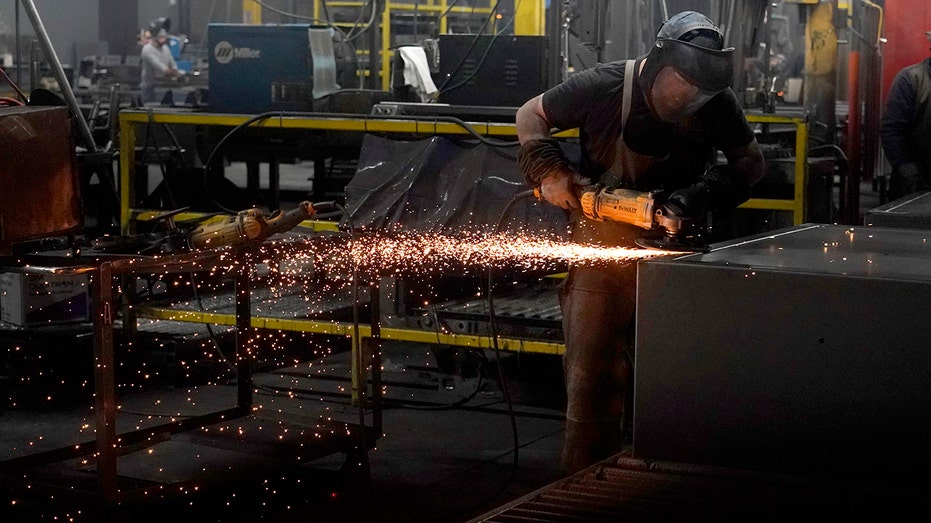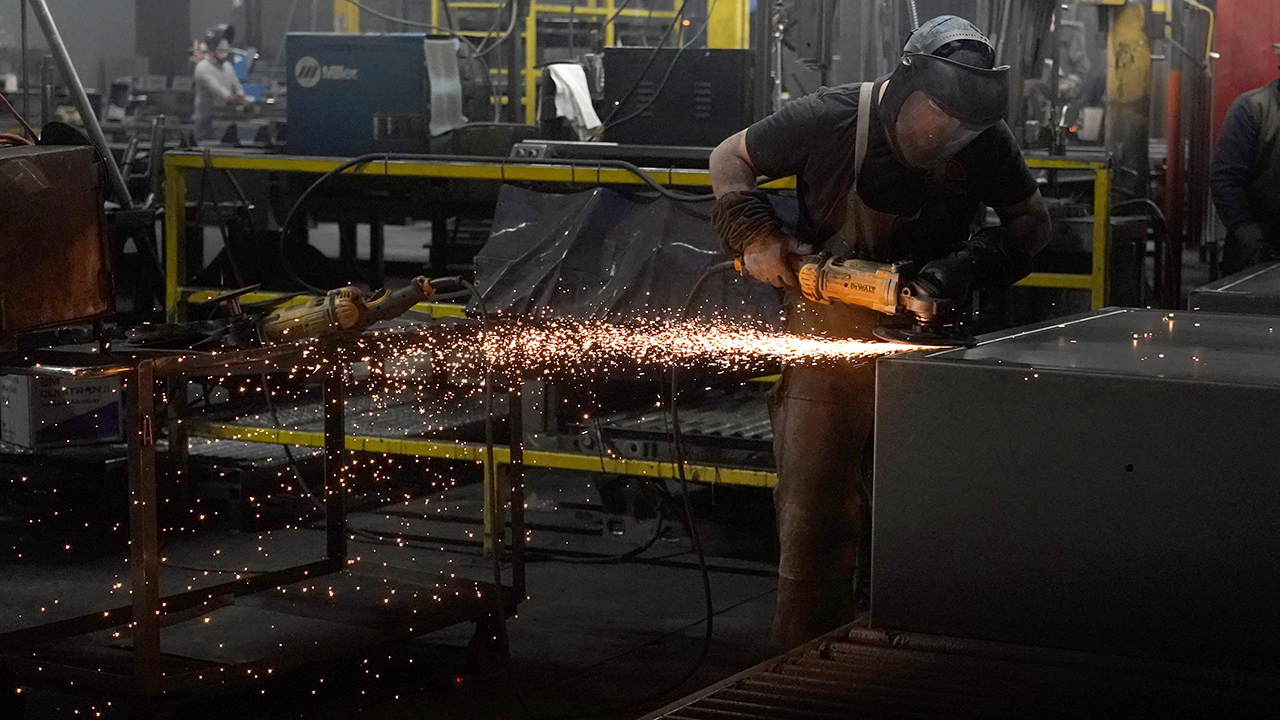US manufacturing sector contracts in November for first time since 2020
Manufacturing activity accounts for over 11% of US economy
Why manufacturing jobs are coming back to the US
Reshoring Initiative founder Harry Moser provides insight on the manufacturing job growth on 'Making Money with Charles Payne.'
U.S. manufacturing activity contracted in November for the first time since the early days of the COVID-19 pandemic as steeper borrowing costs weighed on demand for goods.
The Institute for Supply Management said on Thursday that its gauge measuring factory activity fell to 49 from 50.2 in October. It marks the first contraction and the weakest reading since May 2020.
Readings above 50 represent expansion in the manufacturing sector – which accounts for about 11.3% of the U.S. economy – while readings below 50 represent contraction.
"The November composite index reading reflects companies’ preparing for future lower output," Timothy Fiore, chair of ISM’s Manufacturing Business Survey Committee, said in a statement.
IS THE FED PREPARING TO PAUSE INTEREST RATE HIKES? NOT SO FAST, POLICYMAKERS SAY

A worker grinds a weld on a safe that is being manufactured at Liberty Safe Company on March 22, 2022 in Payson, Utah. Liberty Safe has struggled with supply constraints and price increases in their materials used in manufacturing of their safes. ((Photo by George Frey/Getty Images) / Getty Images)
Of the six biggest manufacturing industries, just two – petroleum and coal products and transportation equipment – registered growth last month. In total, just six industries reported growth, while 12 shrank in November.
Meanwhile, the survey's forward-looking new orders sub-index fell further to 47.2, the third straight month of contraction.
A measure of prices paid for materials used during production dropped for the eighth straight month, with input prices shrinking at the fastest pace since May 2020 – evidence that goods inflation could be starting to ease as supply chain disruptions fade.
DEMOCRATS SLAM 'DANGEROUS' FED RATE HIKES, WARNING OF WIDESPREAD JOB LOSSES

Workers lower an R1T truck body onto a chassis in the assembly line, April 11, 2022, at the Rivian electric vehicle plant in Normal, Illinois. (Brian Cassella/Chicago Tribune/Tribune News Service via Getty Images / Getty Images)
The gauge comes amid growing fears that the Federal Reserve will trigger a recession as it embarks on the fastest tightening course since the 1980s in order to crush inflation.
So far this year, the Fed has raised its benchmark federal funds rate from near zero to a 3.75% to 4% range, well into restrictive territory. Fed Chairman Jerome Powell said on Wednesday that the U.S. central bank could reduce the size of its interest rate hikes "as soon as December," but stressed there is more work to do to cool inflation that is still running near a 40-year high.
CLICK HERE TO READ MORE ON FOX BUSINESS
Although Powell maintained that a so-called soft landing – or "softish" landing – remains "very plausible" and "still achievable," he admitted the path to such an outcome is narrowing.
"We think that slowing down at this point is a good way to balance the risks," he said.





















